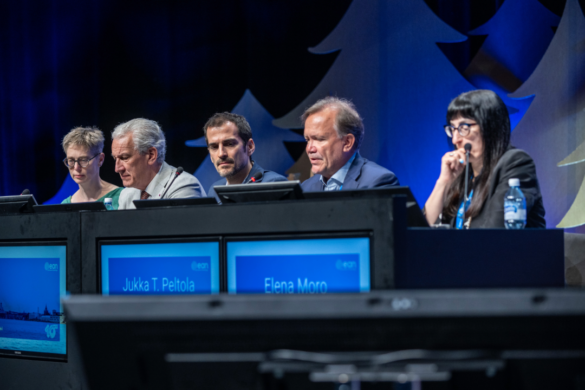by Viktoria Papp
This interesting TV Session titled ‘Tales of unexpected’ from the past of neurology, moderated by Prof. Laszlo Csiba and Conny Lee, showed how past mistakes and misunderstood pioneers led to major steps forward in understanding brain function, brain anatomy, and neurological disease. Furthermore, the reciprocal influence between art and neurological diseases was discussed.
Prof. Kristl Vonck from Ghent, Belgium talked about “the man with no memory”, a famous case of a patient suffering from epilepsy, who underwent surgical treatment leading to severe amnesia and leaving him in a state of continuously living in the present. This case contributed vital information about human memory and the importance of the hippocampus in memory processing. Following this case, the bilateral hippocampus resection was no longer advised, thus saving the lives of many future patients.
Prof. György Pfliegler from Debrecen, Hungary talked about the connection between several fields of art, such as painting or literature, and medicine. He presented the story of the Bubble Boy who was born with congenital immunodeficiency (SCID). The medical history of this particular patient contributed evidence for the viral effect of carcinogenesis.
Prof. Espen Dietrichs from Oslo, Norway presented the achievements of a fascinating pioneer, Sem-Jakobsen, who performed deep brain stimulation in patients with Parkinson’s disease in 1957 or 1958, where electrodes stimulated the subthalamic nucleus. The surgery had an effect on tremor, rigidity, and bradykinesia. Unfortunately, he was investigated for performing secret mind-control experiments and both he and his family were harassed by journalists. Following his death, he was officially absolved by the Norwegian government. Though unappreciated during his time, Sem-Jakobsen’s incredible results are now being documented using his recently discovered films and photographs.












